Wooden houses wedged between concrete, crumbling brick facades with roofs gaping to the sky, and tiled art deco buildings down narrow alleyways: Taichung Central District’s (中區) aging architecture reveals both the allure and reality of the old downtown.
From Indigenous settlement to capital under Qing Dynasty rule through to Japanese colonization, Taichung’s Central District holds a long and layered history. The bygone beauty of its streets once earned it the nickname “Little Kyoto.” Since the late eighties, however, the shifting of economic and government centers westward signaled a gradual decline in the area’s evolving fortunes.
With the regeneration of the once polluted waters of the Luchuan and Liuchuan canals and reclaiming of historic buildings like the Miyahara ophthalmology clinic, the former hub is beginning to see investment return. Organizations and individuals committed to urban renewal have sought to revitalize the area and highlight its rich history.
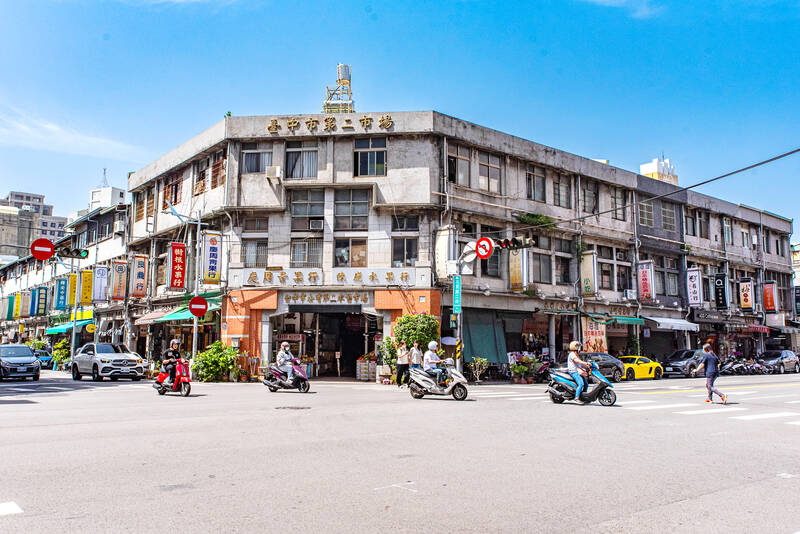
Photo: Kayt Bronnimann
The checkerboard street pattern of Central Taichung is cited as one of the earliest examples of urban planning and during Japanese occupation the colonial government established five traditional markets, one of the more famous being the Second Market (臺中市第二市場) on Sanmin Road.
Known by many names during its century long tenure it was initially known as the Shintomicho Market. Built in 1917, it was colloquially referred to as the Japanese Market, or Rich People’s Market, due to its sale of luxury goods and the high-class clientele that frequented it.
Today the market is a warren of food stalls, raw and dry food stuffs and other small businesses. Numerous stores are family affairs, spanning multiple generations, with some stretching back to the market’s first days.
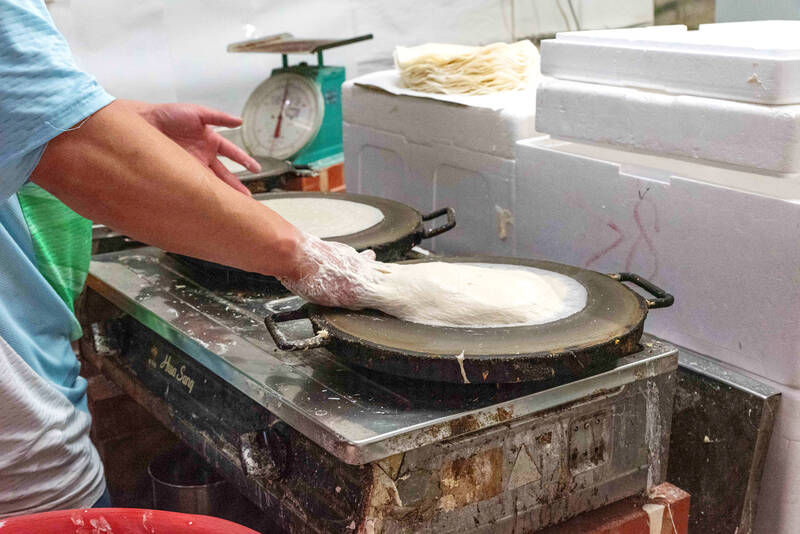
Photo: Kayt Bronnimann
Many of the proprietors are now elderly and former businesses have since closed shop due to dwindling customer numbers. Others though, have felt compelled to return, to forge a link between past and present.
Tony “Fish” Tsai (蔡岳達) grew up in the Second Market, where his parents ran a grocery store. He was recently drawn back to his childhood home, this time with his own family. It’s a place engrained in his memories.
While renovating his house and that of his elderly neighbors, who cared for him as a boy, he said “my deep feelings for the neighborhood began to emerge.”
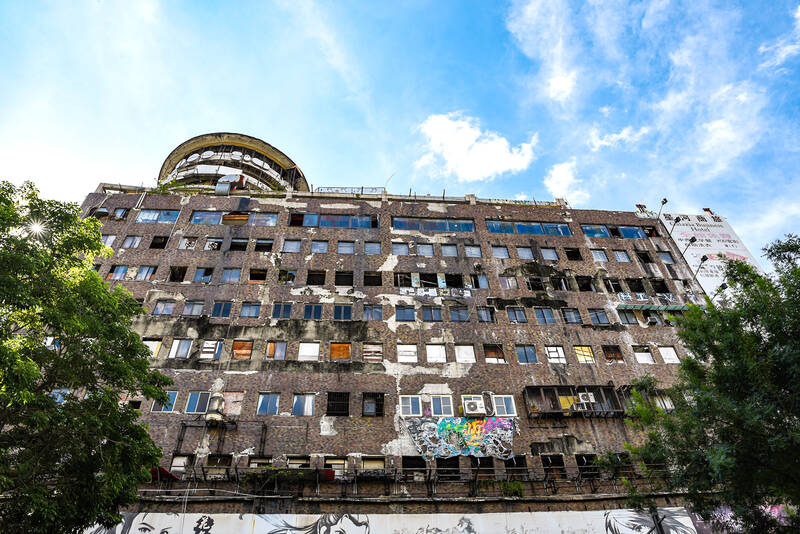
Photo: Kayt Bronnimann
This pushed him to establish the Shitomicho Regional Revitalization Association (新富町地方創生協會) and he has since spearheaded projects that document the community and culture of the historic market.
Working with Tunghai University’s Urban and Regional Development Research Center, he created a short documentary and digital archive to honor the life of Master Wang (王亭), his neighbor and the tailor behind the Zhongxing Suit (中興西服) store. He also collaborated on a series of children’s picture books centered on the sights, sounds and businesses of the Market.
Other groups around the Central District are encouraging a new era of growth that preserves the area’s history and architecture. The Downtown Renaissance Association (中城再生文化協會) is run by local businesspeople, architects, creatives and professors, promoting urban regeneration of the “old city” through events and exhibitions and sharing narrative histories of noteworthy residents.

Photo: Kayt Bronnimann
They also match fledgling businesses with unoccupied buildings, in order to prevent their destruction and maintain the district’s distinct character.
Buildings such as the Central Bookstore (中央書局), restored to its former glory after its closure in 1998. First established in 1927, it was the largest Chinese language bookstore during Japanese colonial rule and became a magnet for intellectuals, literary figures and anti-nationalist activists.
But not every attempt at renewal has been successful. This is the case with the towering remains of Qianyue Department Store (千越百貨), which spans a whole block near the train station. In its heyday as a mixed commercial and residential building it housed an ice rink, revolving restaurant and multiple KTV halls and nightclubs. After being gutted by a fire 2005, it was largely left empty.
Graffiti artist group Escape Plan X recognized the space as part of a collective memory and partially occupied the building from 2017 to 2021. They established artist studios and held events which invited the public to reimagine new possibilities for the future of the space.
Today, all the entrances are boarded up. The broken windows and overgrown rooftops lie in stark contrast to the ever popular Miyahara ice cream store opposite. Despite the promises of previous governments, the Qianyue building has not been revived.
Yet even unused buildings hold purpose. That is the belief of Artqpie, a roving library and art gallery. Under the mantra of “Old houses never die!” they have documented occupied and disused spaces in the self-published zine 25+25 A Walking Tour of Taiwan. This collection of 50 historical houses, storefronts and retail spaces showcases the aesthetic and architectural spirit of the Central District.
Artqpie believes that “the end of one space is the beginning of another era” and through occupying three idle buildings over the last 15 years have lived by this motto. But none are immune to the often indiscriminate push for redevelopment and the nomadic library’s original home is now a ubiquitous corrugated covered lot waiting for its next era.
A recent post by the chair of the Downtown Renaissance Association lamented the destruction of old houses in the Central District. Complicated regulations often mean it is easier for families to be granted loans for new builds rather than for refurbishment, resulting in the demise of many historically significant buildings.
Tony Tsai hopes that grassroots effort and collaboration between government and academia can provide the necessary resources for innovation while preserving the area’s traditional value — “allowing its history and culture to be discovered through fresh presentations.”
Finding a way forward with feet firmly planted in the past.
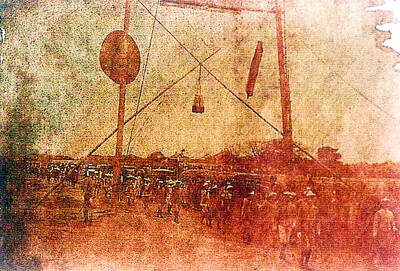
June 23 to June 29 After capturing the walled city of Hsinchu on June 22, 1895, the Japanese hoped to quickly push south and seize control of Taiwan’s entire west coast — but their advance was stalled for more than a month. Not only did local Hakka fighters continue to cause them headaches, resistance forces even attempted to retake the city three times. “We had planned to occupy Anping (Tainan) and Takao (Kaohsiung) as soon as possible, but ever since we took Hsinchu, nearby bandits proclaiming to be ‘righteous people’ (義民) have been destroying train tracks and electrical cables, and gathering in villages

Dr. Y. Tony Yang, Associate Dean of Health Policy and Population Science at George Washington University, argued last week in a piece for the Taipei Times about former president Ma Ying-jeou (馬英九) leading a student delegation to the People’s Republic of China (PRC) that, “The real question is not whether Ma’s visit helps or hurts Taiwan — it is why Taiwan lacks a sophisticated, multi-track approach to one of the most complex geopolitical relationships in the world” (“Ma’s Visit, DPP’s Blind Spot,” June 18, page 8). Yang contends that the Democratic Progressive Party (DPP) has a blind spot: “By treating any
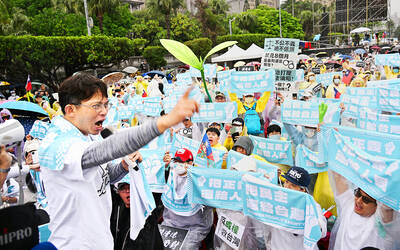
This year will go down in the history books. Taiwan faces enormous turmoil and uncertainty in the coming months. Which political parties are in a good position to handle big changes? All of the main parties are beset with challenges. Taking stock, this column examined the Taiwan People’s Party (TPP) (“Huang Kuo-chang’s choking the life out of the TPP,” May 28, page 12), the Democratic Progressive Party (DPP) (“Challenges amid choppy waters for the DPP,” June 14, page 12) and the Chinese Nationalist Party (KMT) (“KMT struggles to seize opportunities as ‘interesting times’ loom,” June 20, page 11). Times like these can

Swooping low over the banks of a Nile River tributary, an aid flight run by retired American military officers released a stream of food-stuffed sacks over a town emptied by fighting in South Sudan, a country wracked by conflict. Last week’s air drop was the latest in a controversial development — private contracting firms led by former US intelligence officers and military veterans delivering aid to some of the world’s deadliest conflict zones, in operations organized with governments that are combatants in the conflicts. The moves are roiling the global aid community, which warns of a more militarized, politicized and profit-seeking trend